Previously, we saw how water comes into the fishroom. So we have a water source to make top-ups, to compensate evaporation. However, for water changes, we have to throw away dirty water. In this post we'll focus on adding a conveniant way to throw water away.
This is simply done using 40mm PCV piping. The idea is to have an horizontal pipe (with a slope), to get water from near the aquariums, to the outside.
To get water IN the pipe, we need an access. For that purpose, i added four T PVC pieces on this pipe, with the openings vertical. Each T recieves a 20cm pipe. We thus have a few upward pipes, opened at the top.
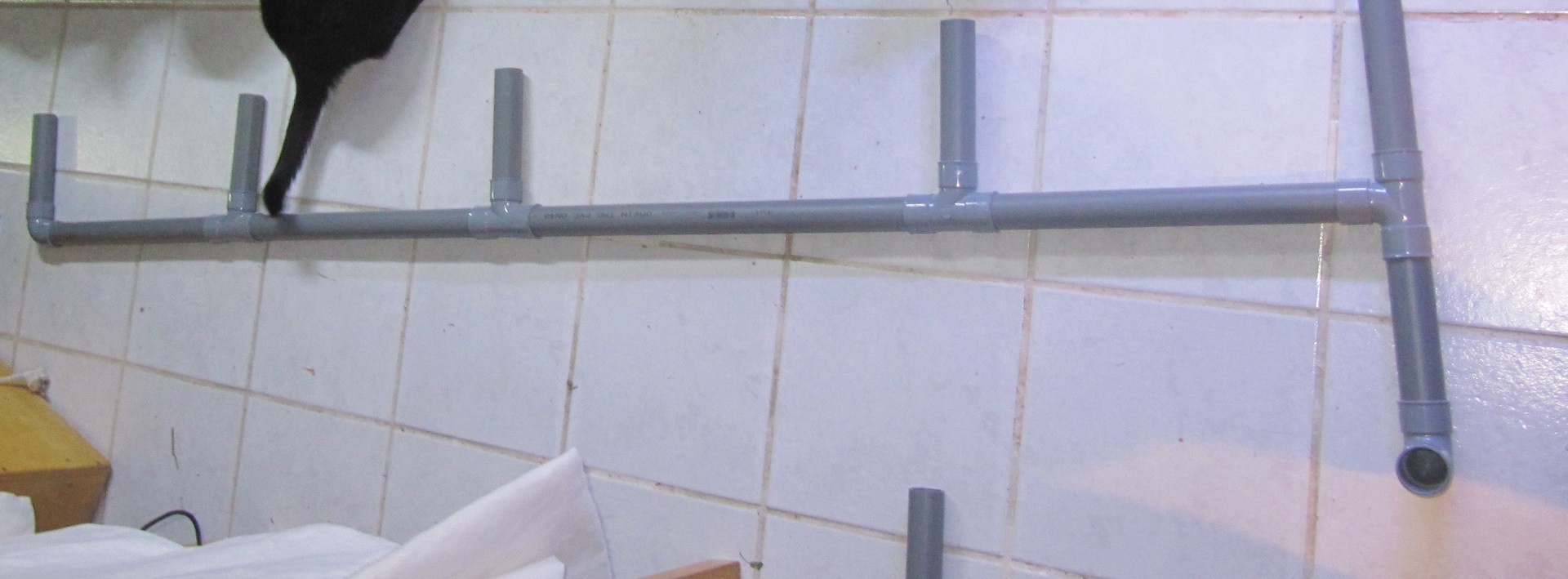
This is then a matter of introducing a smaller diameter flexible tubing, and doing a siphon from the aquariums. We have an exit near each aquarium, so that we don't need long tubing to siphon, as shown on the picture below:
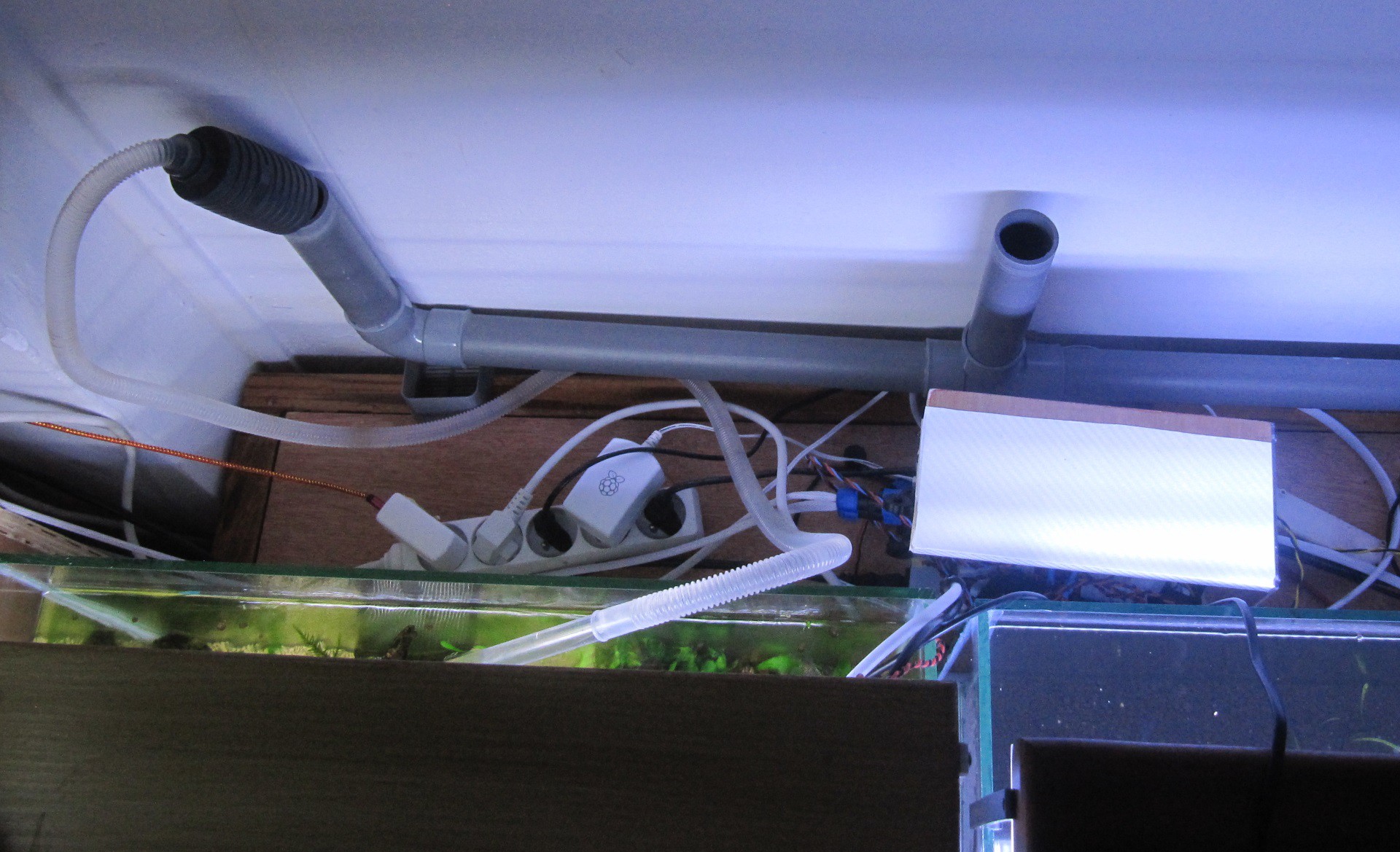
The previous circuit joins a second pipe that gets the water near a hole to the outside.
Here is what it looks like (dry fit, not in the good orientation) :
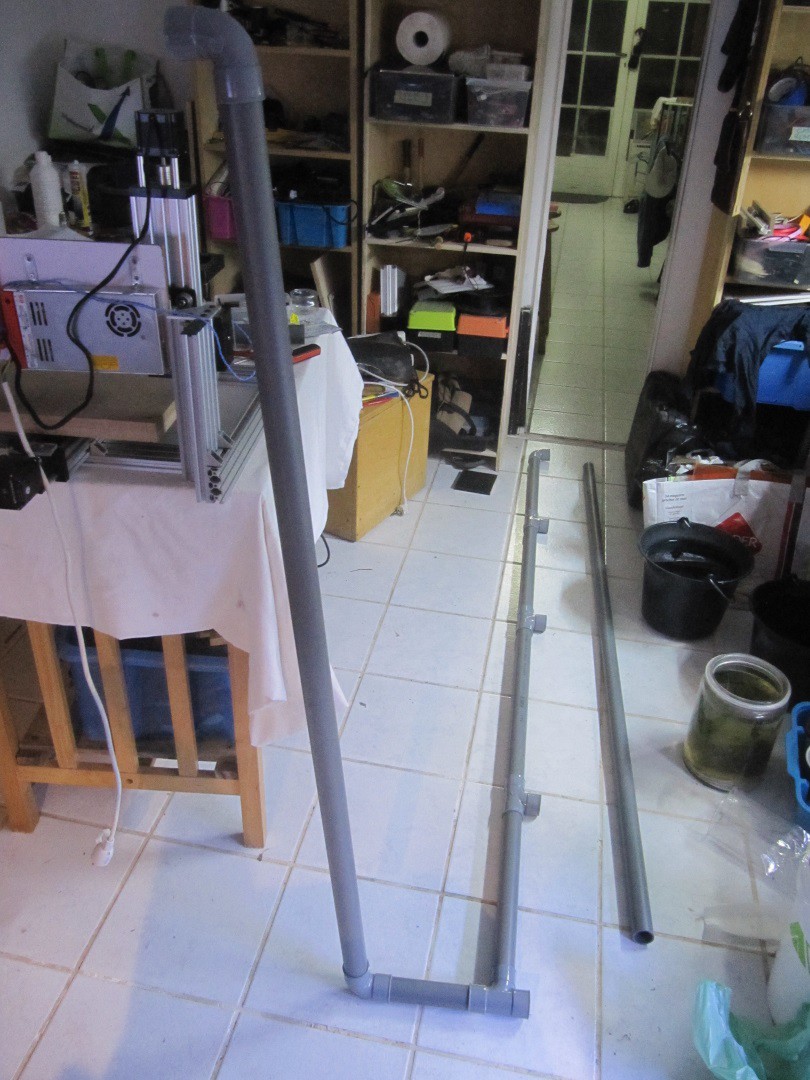
So, once everything was good, i glued the circuit in 2 parts, and one joint is just friction fit, to keep things adjustable.
I tried it, changed aproximately 100 L of water with no leaks, and without a sweat :)
This makes it so much easier to do the water changes, i will now be able to maintain pristine water quality!
I tend to consider that for a security system (such as a blade guard on a circular saw) to properly work, it must be easy and conveniant to use. Otherwise, users bypass it, or don't use it at all. I applied the same philosophy here : for me to do my water changes, they have to be easily done, so that it's not a chore.
All of those systems are meant to house my fishs and shrimps. It has other no relation to this very post, but i can, so here are two 4K pictures of my Neocaridina Davidi Sakura red shrimps, with a berried (she has eggs under her belly) female :
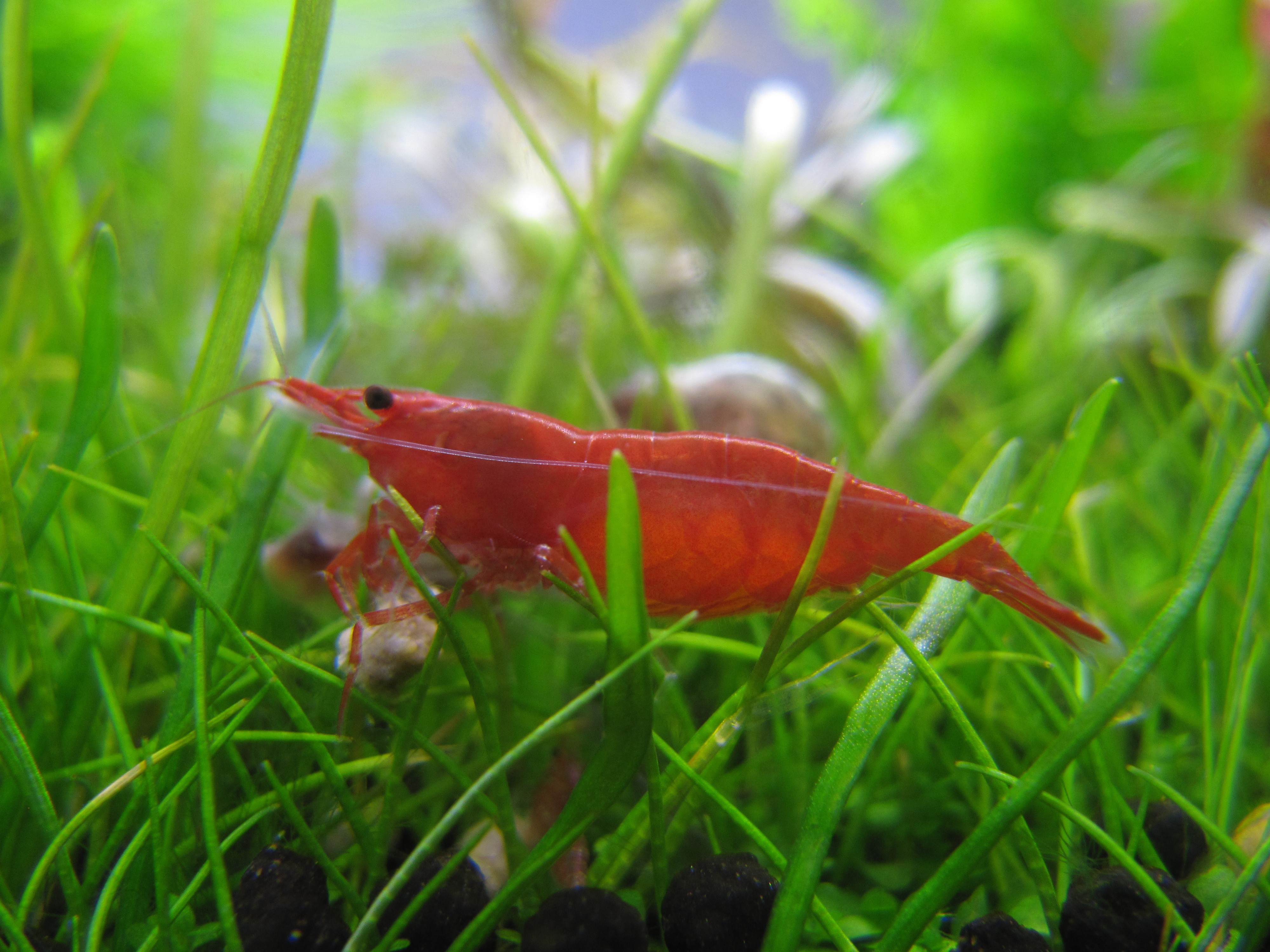
And now two females, with the one in the background beeing the berried one :
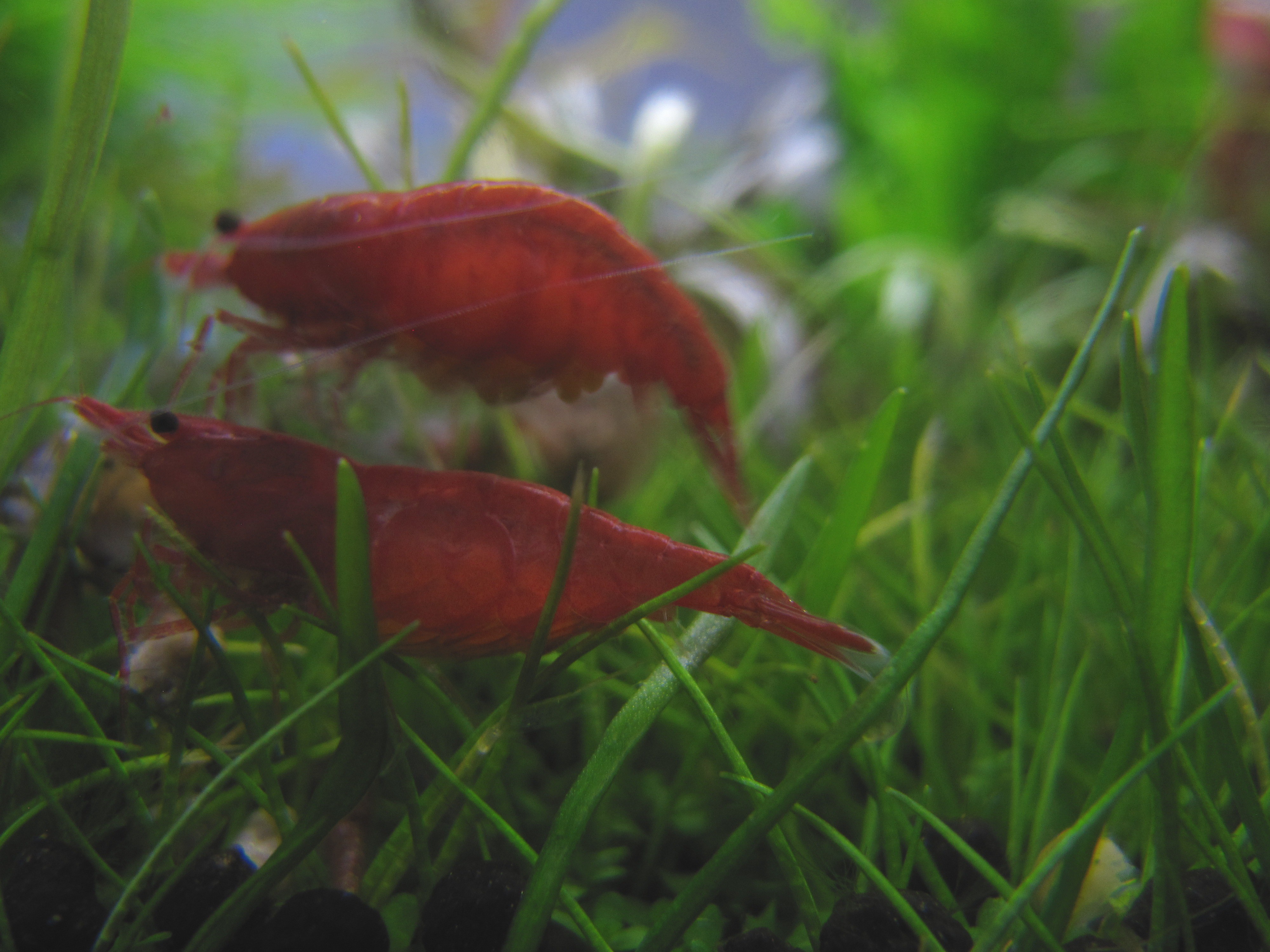
Here is a very young (2 weeks top) baby shrimp in the same tank (aproximately the same scale on the picture):
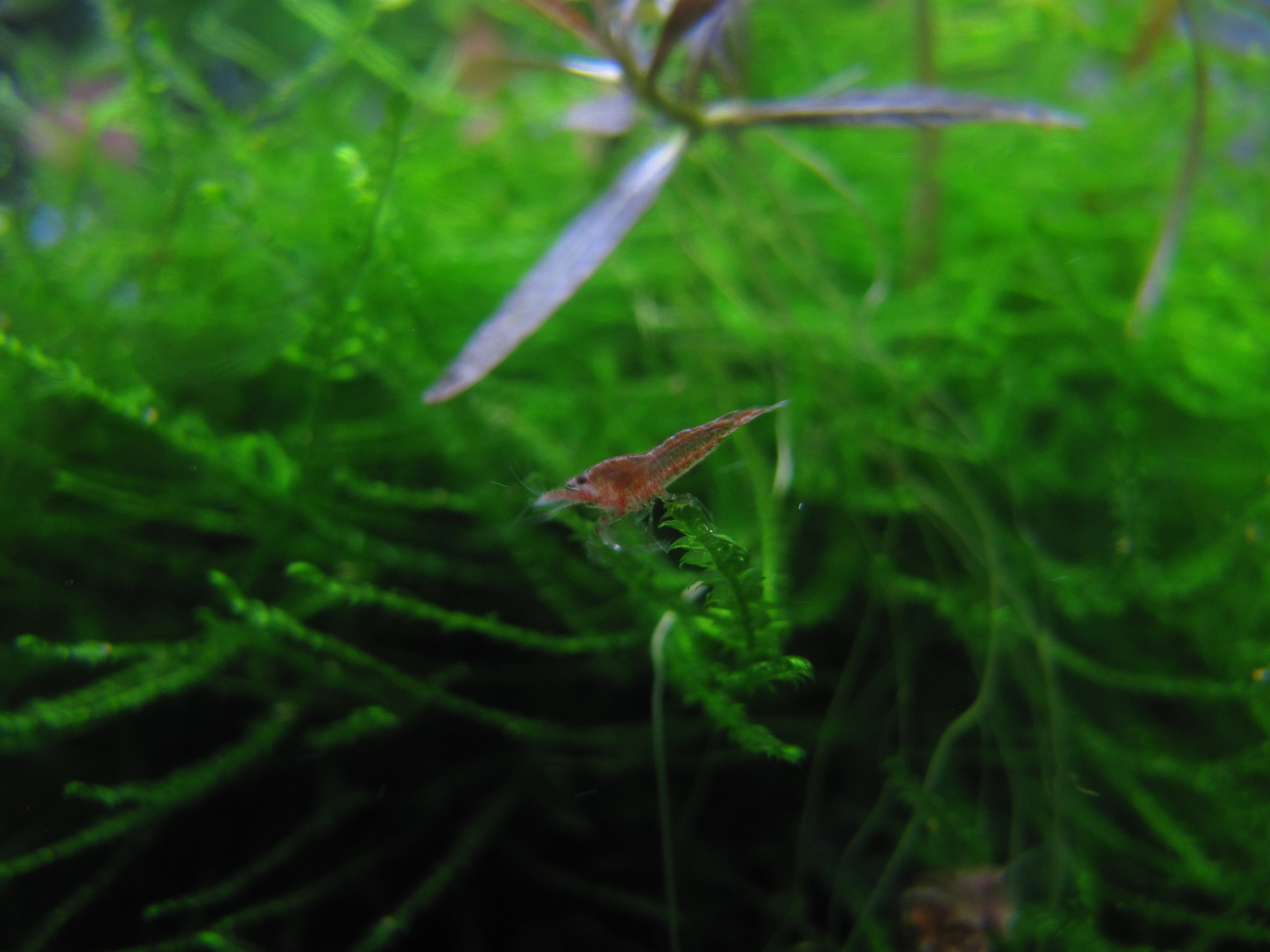
 Audrey Robinel
Audrey Robinel
Discussions
Become a Hackaday.io Member
Create an account to leave a comment. Already have an account? Log In.